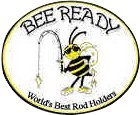SPIDER RIGGING
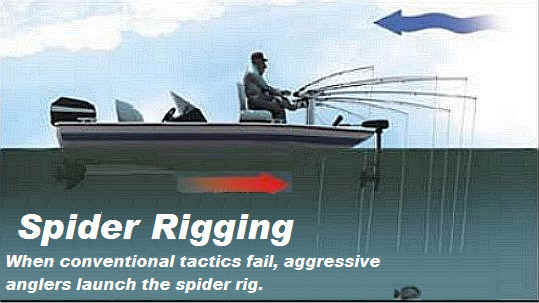
The slow-trolling method known as spider rigging has been used for years to catch boatloads of crappie on almost any body of water in any weather and water conditions. Boats toting numerous long crappie poles, from bow to stern, are a common sight on lakes from Texas to North Carolina.
You want to troll against the wind and first make a dry run to see what obstacles that could be in the way.
Loading eight rods on the front of the boat allows you to comply with tournament rules and have a more stable boat for slow trolling. With two persons sitting in the front of the boat, the added weight pushes the boat deeper into the water, stabilizing it, particularly on windy days. This prevents waves from constantly bouncing the poles and making the bait bounce up and down. If the bait is bouncing around a lot, the fish aren't going to bite.
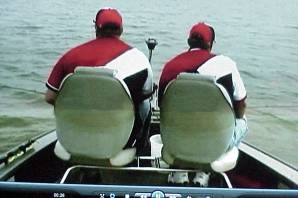
You can even add more weight to the front. At can add sand bags in the bow to stabilize the boat in rough water.
Put your transducer on your trolling motor and the graph up front so you can try to position the boat away from trees and brush piles. Keep a constant vigil on the electronics while watching your rod tips.
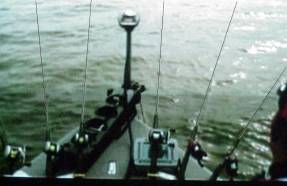

A Spider Rig system usually consists of eight 10-foot Crappie rods fanned out from side to side. The usual rig is 2 hooks tied on a three-way swivel and two leader lines. The first leader is about 6 to 8 inches long, and you could use stiffer monofilament (12-16lb) to make the hook stand out straight from the main line. Then run a bottom leader (dropper) of 8lb test about 24 inches for fish holding in a tight school close to cover and extend the leader to 3 to 4 feet for scattered, suspended fish. This leader would have a ¾ oz egg sinker tied in the middle.
The main bait on a spider rig is #2 Crappie hooks with minnows.
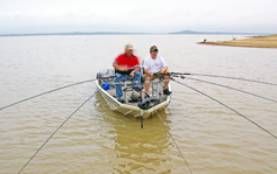
The poles -- long, graphite or graphite-composite trolling or jigging poles, are held in rod holders.
Some angler’s rod holders are attached to the boat’s gunwales. In more recent years, however, fishermen have begun using high-quality “Riser†type holders that won't slip off or twist to the side.
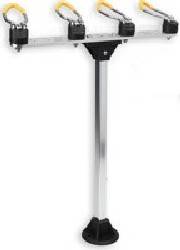
These Risers have two to eight rod holders attached to a crossbar, and each crossbar is on an upright that has a strong bottom bracket for securing the Riser in the boat. When properly placed, these holders allow the angler to fish with several poles spread out at regular intervals across the front, back and/or sides of the boat, usually a foot or two apart. Plus the rods are all close to the fisherman for quick hook sets. Adjust the rod holders so the rod tips are just a few inches off the water.
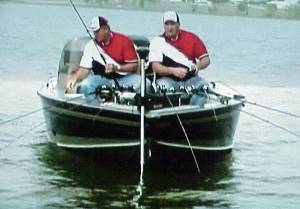
Rigged this way, the angler can troll against the wind, under control, with an electric motor and sweep a broad area of water with a variety of levels to find crappie.

